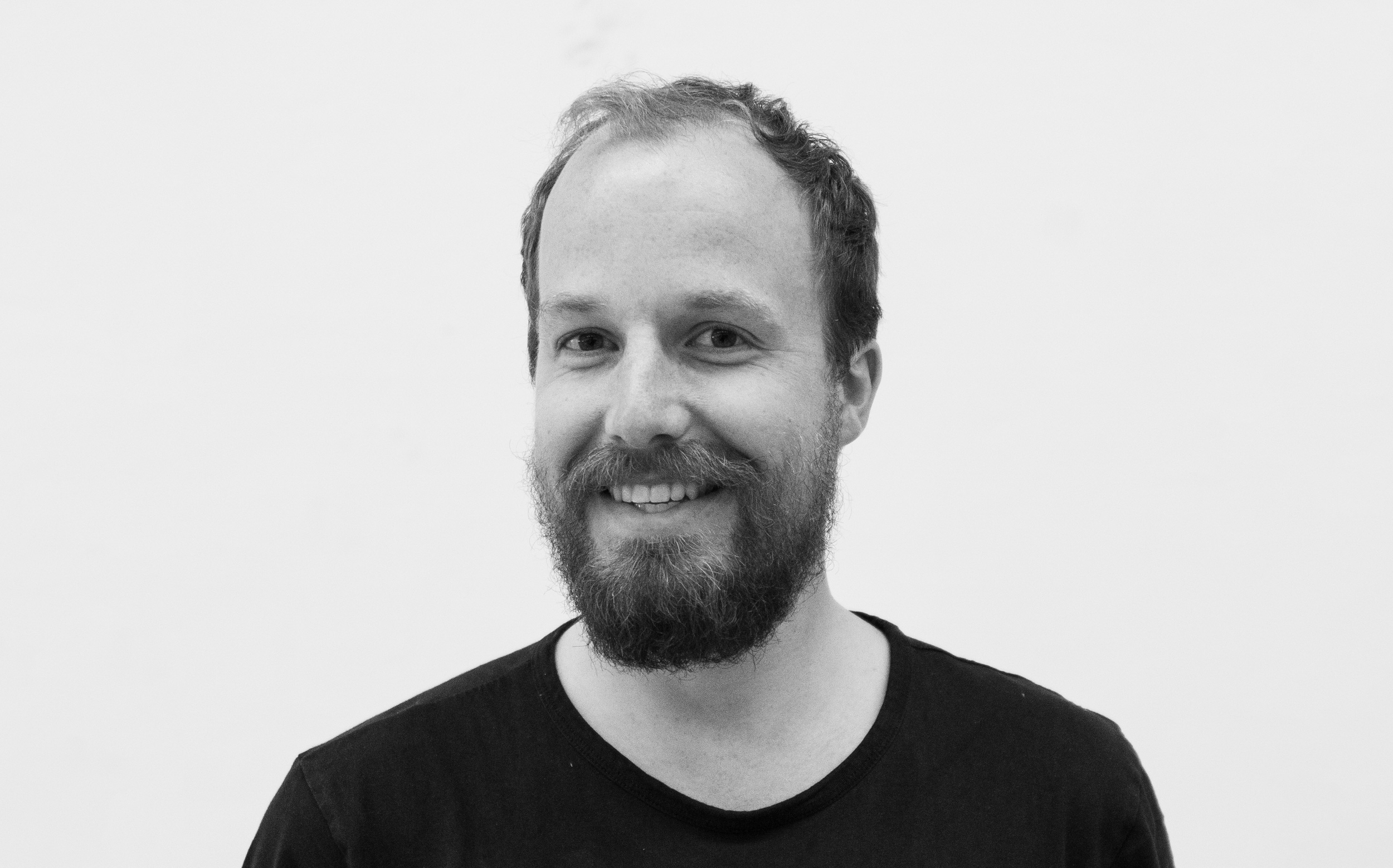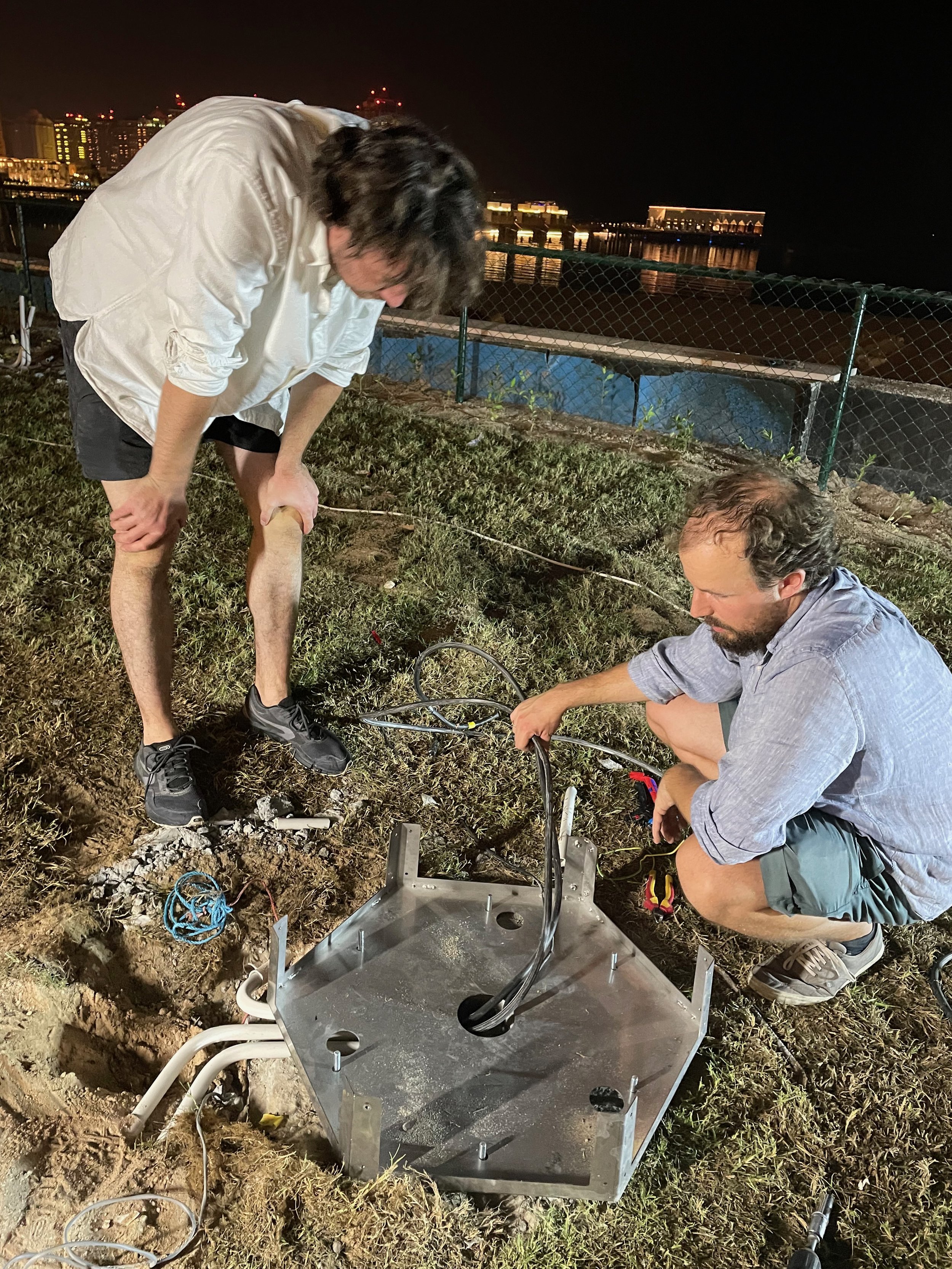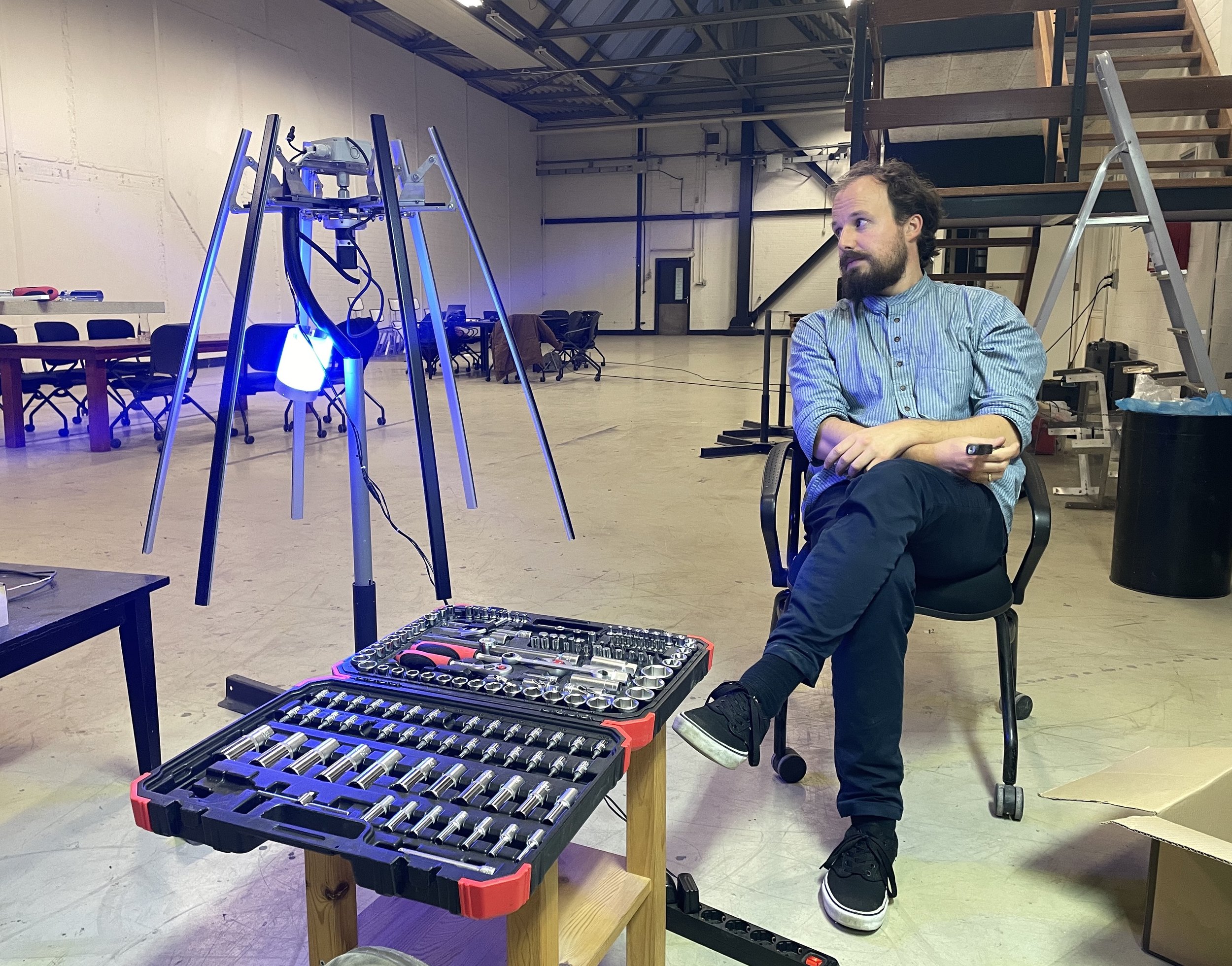‘The synergy between technical execution and design is what matters’
An interview with Simon Luitse, Engineering Director at VOUW.
Simon Luitse boasts a diverse background in architecture, product design, and construction engineering. His journey began in architecture, but he soon discovered his true talent lay in the systematic design and technical execution of ideas. Leveraging his network and programming skills, he found himself immersed in the realm of designing 3D-printed bras, where he applied innovative production methods and material expertise. He also worked on large-scale steel structures for aboveground tram networks in South Korea, as well as sustainable construction projects such as modular timber construction and ecoducts in the Netherlands. Simon possesses a broad interest in materials and structural applications, which has provided him with a solid foundation. His experiences across various fields have led him to embrace a holistic approach to product design, taking into account users, construction processes, and materials. This approach shines through in the installations he creates at VOUW, reflecting his unique perspective and meticulous craftsmanship.
Can you explain how your technical work contributes to VOUW's overall vision of productions and how it aligns with the concept of slowtech?
From the very beginning, I have been involved in the developments at VOUW. We started by exploring ways to combine the elegance and details of the Art Nouveau movement with modern production methods such as 3D printing and 3D scanning. Since then, we have always stayed in touch, particularly focusing on technical questions and execution aspects.
My background lies in architectural design, but I have shifted my focus more towards construction technology. I have always been focused on developing challenging designs. I believe that my contribution to the VOUW team primarily lies in bringing together technology, construction, design, and elegance. VOUW enjoys pushing boundaries and strives to advance technology, which requires technical innovation to seamlessly merge all these aspects.
I see myself as someone who helps realize and reinforce the ideas that VOUW has around slowtech. In my design vision, it is never just pure design or purely technical execution that should take the lead. It's always about the synergy between technical execution and design, and the best results emerge from that fusion.
Can you provide a good example of a successful merging of technical execution and design?
A good example of successful fusion is the Bloomlight. From the initial prototype, we looked at how technical functionality and design could coexist and how we could create an aesthetically pleasing product using the available production methods.
The evolution of the Bloomlight, such as the opening of the head and the suspension bracket, is a combination of choices that have resulted in a complete, robust, and functional design.
During these technical challenges, Mingus (Vogel, co-founder of VOUW, editor's note) always had strict requirements in terms of the visual aspect. Finding a balance between artistic expression and technical feasibility was an ongoing challenge. Although we didn't always agree on the execution, as someone with a design background, I understood why certain aesthetic choices needed to be made.
When we disagreed or were uncertain about certain choices, we often found a way out by creating prototypes and testing how the principles translated into visually appealing forms. Sometimes the design or construction was adjusted, and sometimes the design naturally found its way to the right center.
So, a clash leads to the design of prototypes and ultimately a solution?
Yes, I think that a clash in that way, or not being in agreement, doesn't necessarily have to be the end. I believe that you should maintain a dialogue about what the possibilities might be and be able to empathize with the other person. So, the engineer needs to put themselves in the designer's shoes, and vice versa, in order to arrive at jointly better solutions.
Can you provide an example of a bottleneck?
During the transition from version 1 to version 2 of the Bloomlight, we encountered a bottleneck. We gradually replaced plastic components with stainless steel to improve durability and weather resistance. One challenge, for example, was Mingus's (Vogel, ed.) idea to make the bracket that holds the head from folded sheet metal. However, I noticed that if we simply made it from a flat sheet, it might move too much and lack sufficient structural stiffness.
The bracket of the Bloomlight
We tried various designs and modifications between version 2 and version 3. By adding strategic folds to the steel, we created a structural profile that provided the necessary strength. We also made prototypes and tested them to determine the proper shape and force for the final design.
There was a challenge in the collaboration between the use of a folded profile (by Mingus) and a round profile (by me) for the tube on which the head moves. A round tube is sometimes more difficult to shape, but with a profile, curved forms are harder. In the end, we found a middle ground by rolling the tube and welding a folded plate on top, which simplified the assembly of the head and the control.
This made the process much easier than working with just a round tube.
Maintenance is essential for the durability of our installations. How do you design structures that are sustainable and easy to maintain, taking into account the dynamics of public spaces and festivals?
We pay close attention to maintenance when designing structures that are sustainable and easy to maintain, especially since we design our installations for public spaces. We conduct extensive testing during the design process to ensure that everything is properly secured and waterproof. Sometimes, we have to design and produce specific parts ourselves.
Although something may look good on the drawing board, it is important to perform physical tests. An example of this is the Bloomlights we tested in Qatar, where we tested the heat resistance of the electronics at temperatures of 50 degrees Celsius. We also conducted melt tests on the materials used and even built a sandstorm simulation. During the sandstorm test, we observed whether the mechanism remained intact and where the sand ended up in the mechanism after running for 3 to 5 hours.
Bloomlight head placed in wooden box with see through window during sandstorm test
It is never finished because you continue until you have the evidence. Why is that? Why is it important to you?
It is important to keep going until we have the evidence because assumptions can be dangerous, especially in complex tests. For example, we discovered that we needed to reinforce the fiberglass pole of the Bloomlight, while initially assuming it was already sufficiently strong. We conducted extensive tests to ensure that these assumptions were safe.
It is challenging to predict all the responses of a design to different conditions. As the design evolves, new weak points will always arise. It is difficult at that moment to make a good assumption about what the weak point will be.
Overall, I consider it important to fully complete and finalize a design, rather than offering partial solutions or designs that still lack certain aspects. It is personally unsatisfying for me to deliver something incomplete.
“It is important to keep going until we have the evidence because assumptions can be dangerous, especially in complex tests.”
Most people clock out at five o'clock and say "I'm going home." You keep going until it's done. Why is that?
Well, I think I always enjoy working until it's done, especially if there's a manageable task at hand that can be completed within an acceptable time frame. I prefer to finish that task rather than leaving it for tomorrow.
Mingus Vogel (L) and Simon Luitse working late on the installation of the Bloomlights in Qatar
The client base of VOUW consists of public organizations (museums and governments), light festivals and the hospitality business. How do you tailor your technical solutions to meet the specific requirements of these different clients?
There is definitely a common thread in the needs of VOUW's clients, as they often seek unique work that is not easily found elsewhere. They often come back to us and respond positively to new ideas we share with them.
However, there are differences between hotels, festivals, museums, and government institutions. Each of them has its own comfort zone and priorities. At large festivals, it often revolves around large crowds flowing past the works, so clarity is essential. In a museum, there is more time to contemplate and enjoy the artworks. Government institutions and hotels want artworks to take a more background role and be discovered as pleasant surprises. At light festivals, art takes center stage, and they want to create attractive and self-explanatory objects.
We adapt our designs to meet these different needs and requirements, allowing us to fulfill multiple wishes.
How do you stay up to date with the latest developments in structural engineering and technology? How do these developments influence your work and enhance the possibilities of creating captivating and interactive installations?
My main source of knowledge about technological innovation is my network. I am not active on YouTube or Instagram, but I stay in touch with people who are involved in interesting technological projects. With my background in technical university, I have always tried to surround myself with people who are doing challenging and unique things, such as working on solar cars, sustainable modular construction, smart sun shading systems, robotics, and automation.
Simon Luitse testing the head of the Bloomlight
When I see opportunities to integrate these new developments into my work, I enjoy conducting my own research on those topics. However, it's important for me to have a clear purpose behind it; otherwise, I can get lost in fragmented information. I find that I retain information best when I can apply it directly. While there is a wealth of information about innovation available on the internet, I feel that skills and basic knowledge about working with different materials like steel, wood, and plastic, as well as machining techniques like milling and turning, seem to be getting lost. These skills may not be technologically innovative per se, but a good broad foundation provides more possibilities and a greater potential for innovation.
“…a good broad foundation provides more possibilities and a greater potential for innovation.”
How about something practical? Can you give an example?
A good example of this is when we were working on the Bloomlight. There was a assumption that there was an issue with the LiDAR sensors. Although I'm not an expert in coding, I do have a basic understanding of how it works. This allowed me to comprehend the algorithm that filters the LiDAR information. Together with Daan van Hasselt, the developer of the Bloomlight software, we went through the algorithm step by step. With my basic knowledge, I was able to connect the input and output of the algorithm and solve problems, even without being able to code myself. This led to improved detection sensitivity and distance for the Bloomlight.
Finally, what do you find most fulfilling or rewarding about working at VOUW?
What I find most fulfilling and rewarding about working at VOUW is the constant amazement and wonder I see in people experiencing our works. From the small comments during the concept telling to actually seeing and interactively experiencing our installations. The fact that I have played a role in that and can provide people with joy, astonishment, wonder, and inspiration is amazing. Without wonder, there would be no "slowtech." If we apply technology that doesn't amaze people, they won't pause or engage in the experience. We need a trigger to take people out of their standard patterns, and that's where I contribute.
Simon Luitse in Singapore





